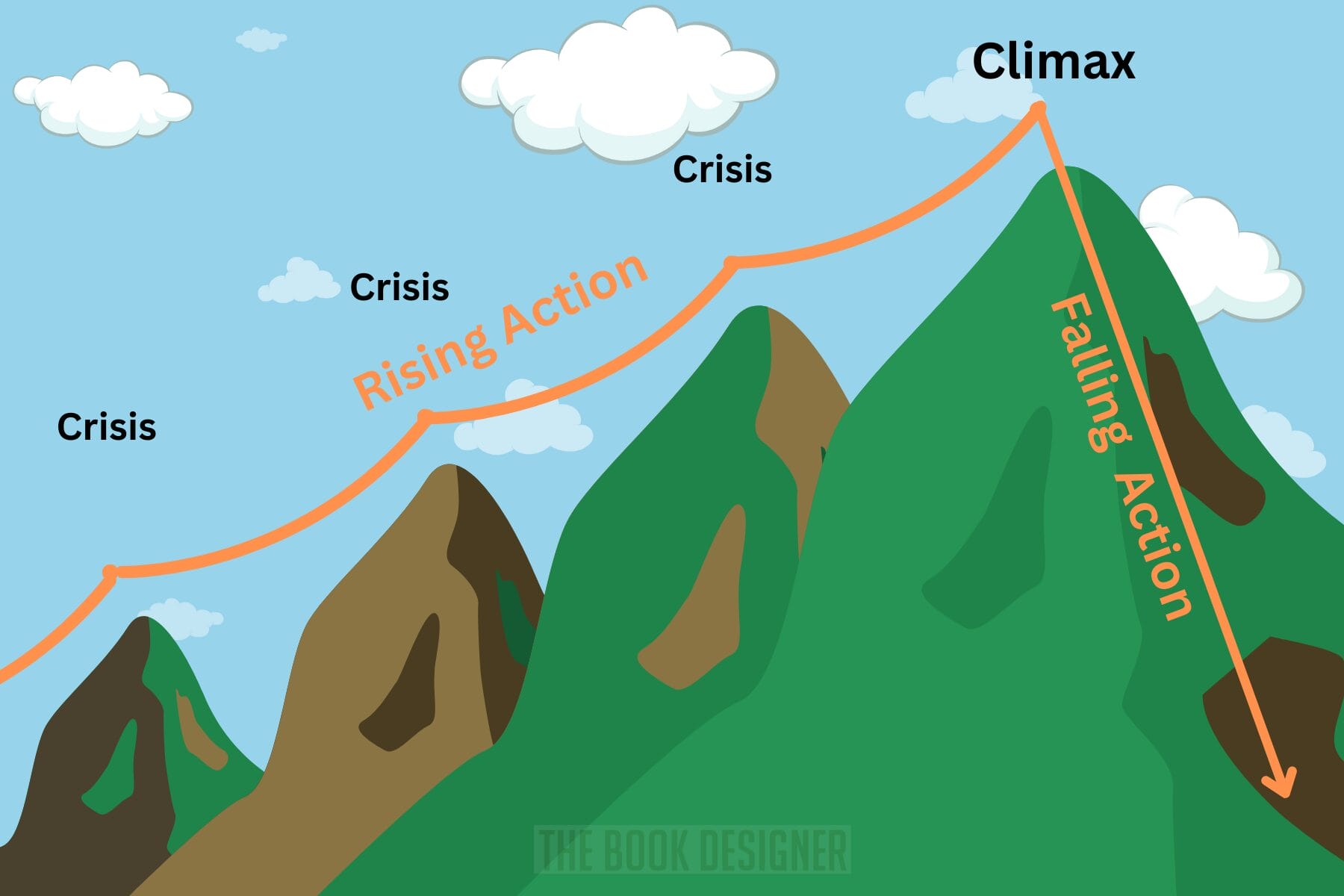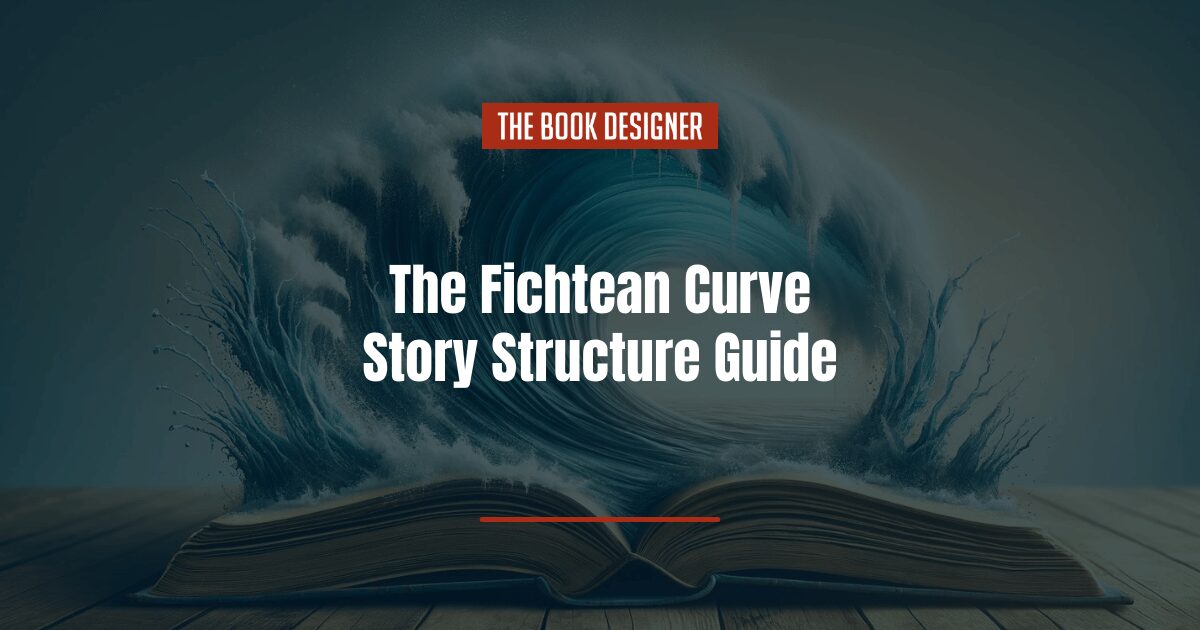There’s nothing new under the sun, and all great stories boil down to the same basic plot structure: there’s a conflict, it builds up to a high point, and eventually, one way or another, it gets resolved.
However, there are different ways to engage your readers. The Fichtean Curve is one storytelling method that skips exposition and throws characters right into the action.
In this article, we’ll look into what exactly this storytelling framework is, how it’s different from other approaches, and how effective it is.
We’ll cover:
Introduction to the Fichtean Curve
The origin of the term “Fichtean Curve” is quite intriguing. It was introduced in 1983 by novelist and creative writing teacher John Gardner in his book The Art of Fiction: Notes on Craft for Young Writers. In the book, he discusses the “Fichtean Curve” as a model for plotting a novel, attributing it to the 18th-century philosopher Johann Gottlieb Fichte.
However, Fichte’s work was unrelated to storytelling or narrative research, and experts on Fichte agree that the German philosopher probably had nothing to do with this concept. The true origin remains a mystery since Gardner does not mention a specific source.
Despite this, the story structure described as the Fichtean Curve is still effective. Many forms of storytelling use it, including books, movies, and even video games.
The concept of starting a story in the middle of the action, known as in media res, is often a hallmark of the Fichtean Curve story structure. Characters find themselves in a crisis from the very start, and as one crisis begins to resolve, a bigger crisis emerges, followed by the next, and so on—until the story reaches its biggest crisis, aka the climax.
This plot structure keeps readers engaged right from the start of the story. The resolution usually happens quickly; you won’t find multiple endings like in “The Lord of the Rings.”

Understanding the Three Key Stages of the Fichtean Curve
Rising Action
At its heart, the Fichtean Curve starts stories in the thick of things. Instead of beginning with a long introduction, it drops us right into a moment of crisis or conflict. This grabs readers’ attention and sets the pace for what’s to come.
The nature of the first crisis, or the inciting incident, can differ from genre to genre, reflecting unique concerns, settings, and emotional landscapes. Let’s have a closer look at some examples:
Fantasy
In fantasy, crises often involve elements of the supernatural, epic quests, or battles between good and evil. For example, A Game of Thrones, the first book of A Song of Ice and Fire, starts with men of the Night’s Watch facing terrifying creatures beyond the Wall. The crisis can also be internal, like the political conflict between the noble houses that follow.
Mystery
In mystery genres, crises typically involve an unsolved crime or a puzzling disappearance that starts an investigation. For example, Gone Girl kicks off with the disappearance of Amy Dunne. We’re plunged into the tension and questions surrounding her vanishing from the start. The search for Amy and the suspicion of her husband, Nick, pull us deep into a web of lies and secrets.
Romance
Romance stories often start with emotional or situational crises that challenge the characters’ perspectives on love. In The Fault in Our Stars, we’re introduced to Hazel, who is attending a support group for her cancer, where she meets Augustus. Their connection sets off a poignant story of love and resilience in the middle of personal struggles.
Thriller
Thrillers’ hallmarks are high-stakes situations that demand immediate resolution. For example, Fight Club begins with a gripping scene of the narrator at gunpoint by Tyler Durden. The plot later leads us into underground fights and existential quests marked by chaos and a search for meaning.
Climax
The climax is the narrative’s peak, where tension from the rising action culminates in the story’s most significant challenge. A climax isn’t just any conflict; it’s a deciding confrontation that tests characters and decides their fates.
Key aspects of a powerful climax include:
- Transformation marks a pivotal change in the narrative and character development.
- Confrontation directly addresses the initial conflict or crisis.
- Emotional Intensity engages readers with deep emotional stakes, whether betrayal, loss, or self-discovery.
- Turning Point defines the story’s resolution and the characters’ outcomes.
A well-crafted climax, reflecting earlier crises, is essential for a memorable and impactful story. It’s where characters undergo transformation and growth, ensuring the narrative delivers a resonating conclusion.
Falling Action
After reaching the climax, the story moves into the falling action phase. Think of this as the calm after the storm—the part where everything starts to make sense again. Here, the aftermath of the climax is dealt with, and the stage is set for the ending. This phase is about closure: characters and readers take a breath, look around, and see where everything has landed.
The falling action stage is the time to tie loose ends from the story’s climax. Were any questions left unanswered? Are there conflicts that need a final resolution? This is the time to address them. Whether revealing secrets, explaining mysteries, or just showing how characters adjust to their new realities, the falling action brings clarity and satisfaction to the narrative.
The length and complexity of this stage depend on how expansive your story is and how many storylines you’ve decided to explore. A simple story might wrap up quickly, while a story with multiple characters and intertwined plots might need more time to conclude.
Fichtean Curve vs. Traditional Story Structures
The Fichtean Curve stands out from traditional story structures like the Hero’s Journey, Freytag’s Pyramid, and the Three-Act Structure. The main difference is that the Fichtean Curve structure focuses on keeping things simple and tense: instead of developing detailed stages or specific character arcs, it cuts straight to the chase.
The Fichtean Curve story structure zeroes in on crises and conflicts, ensuring readers are hooked by the characters’ struggles right from the start. This approach doesn’t just simplify storytelling; it deepens the connection between readers and the characters by focusing on what drives the story forward.
Practical Applications of the Fichtean Curve
A structure of a story like the Fichtean Curve, which grabs attention from the start, is widely used in both books and movies — and often and often, such books are made into movies). It immediately hooks viewers and readers with action and minimal exposition, making stories engaging from the very start.
Here are some examples of how it’s used across different mediums:
In Films
- Quentin Tarantino: Films like Pulp Fiction and Kill Bill open with scenes that pull you straight into the action, setting up stories of unpredictability and revenge.
- Christopher Nolan: Inception and The Dark Knight start with disorienting and intense scenes, drawing viewers into worlds of mystery and moral conflict.
In Literature
- Stephen King: King’s novels, such as Misery and The Shining, introduce crises early on, immersing readers in suspense.
- Neil Gaiman: American Gods and The Ocean at the End of the Lane begin with compelling scenarios that promise adventure and conflict.
Why It Works
Such story structures keep narratives tight and exciting, focusing on escalating conflicts and character growth. They are effective because they ensure the audience is immediately engaged and stays hooked, eagerly anticipating how the story unfolds.
Quick Advice for Writers Who Want to Use the Fichtean Curve Structure
- Start with a Bang: Open your story with a crisis.
- Escalate Conflicts: Increase the stakes with each new challenge.
- Focus on Character Growth: Use crises to develop your characters.
- Craft a Satisfying Climax: Make sure the climax resolves the built-up tension.
- Maintain Momentum: Keep the story moving by ensuring every part contributes to the tension or leads towards resolution.
Using the Fichtean Curve can make your stories more engaging and impactful, capturing your audience from the beginning and keeping them invested until the end.
Conclusion
The Fichtean Curve is a powerful way to tell stories that immediately start with action, making it different from traditional story frameworks. It begins with a crisis, quickly drawing characters and readers into a fast-paced story full of tension and conflict. This keeps the story interesting and moving swiftly, catching readers’ attention from the start.
For writers wanting to tell gripping stories, the Fichtean Curve is a great option to consider. It encourages you to think creatively about your story’s structure, pushing you to start with an exciting event and keep the excitement going by adding more challenges. This plot structure helps make your story deeply engaging, ensuring readers stay hooked from beginning to end.




